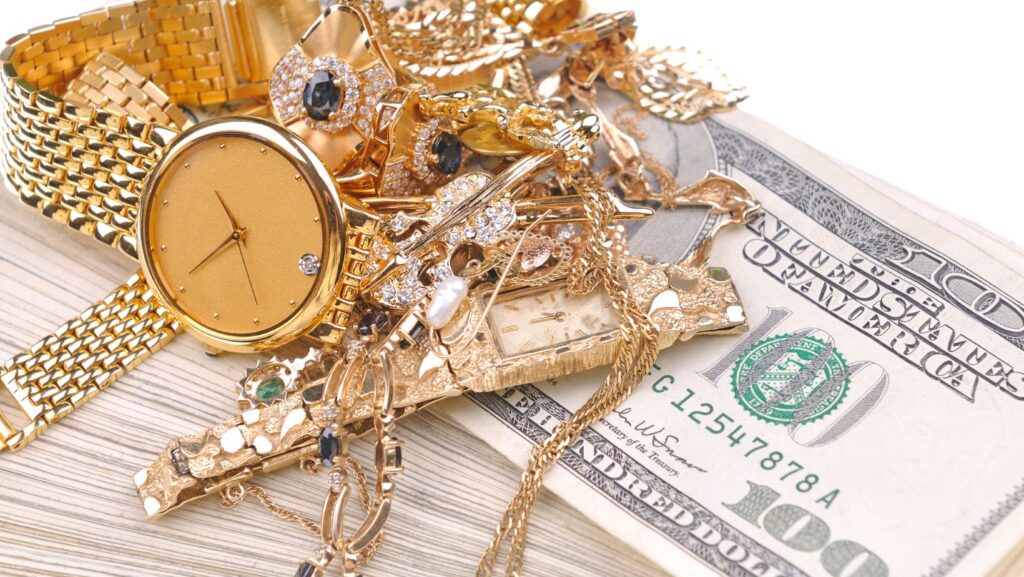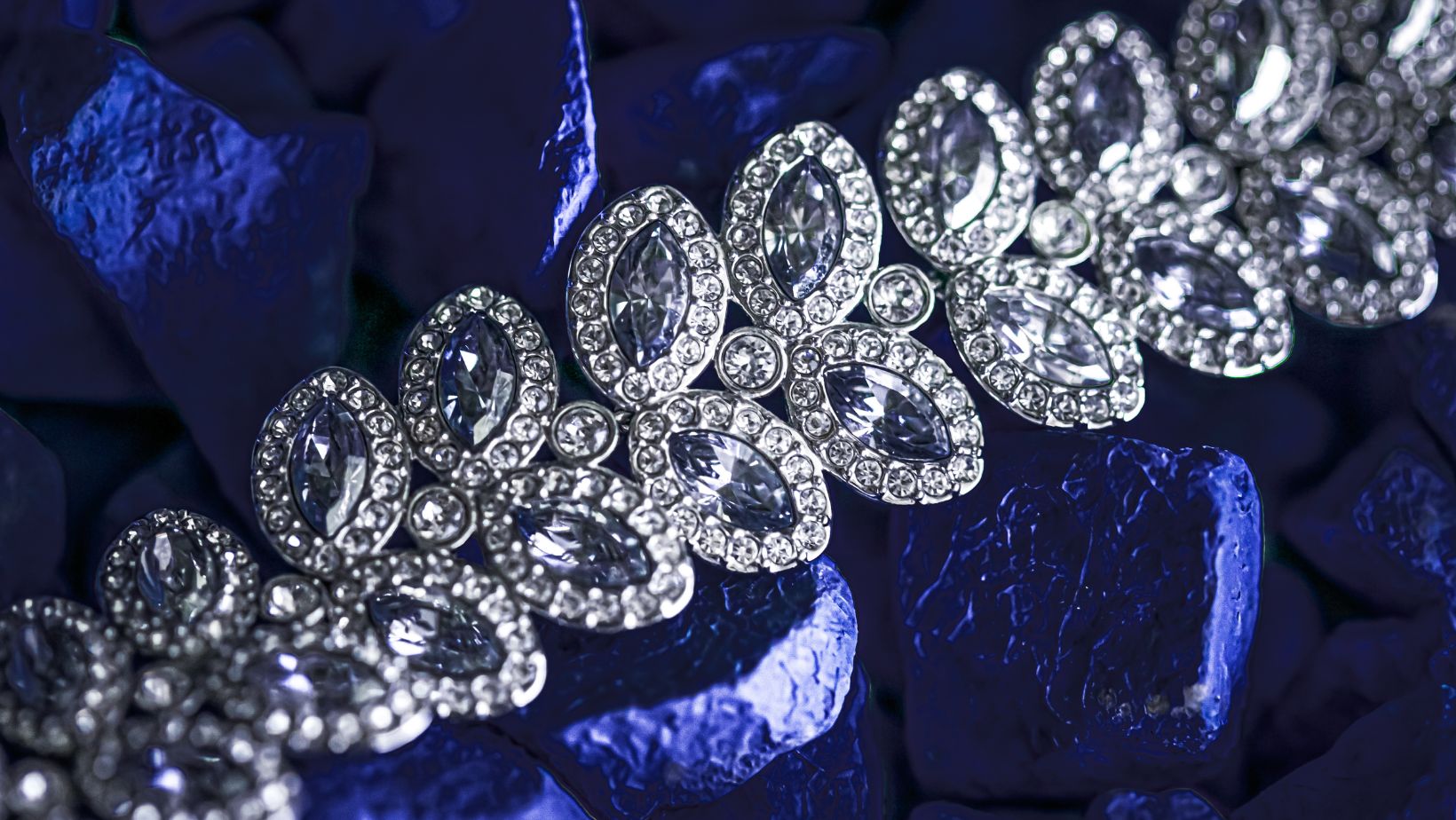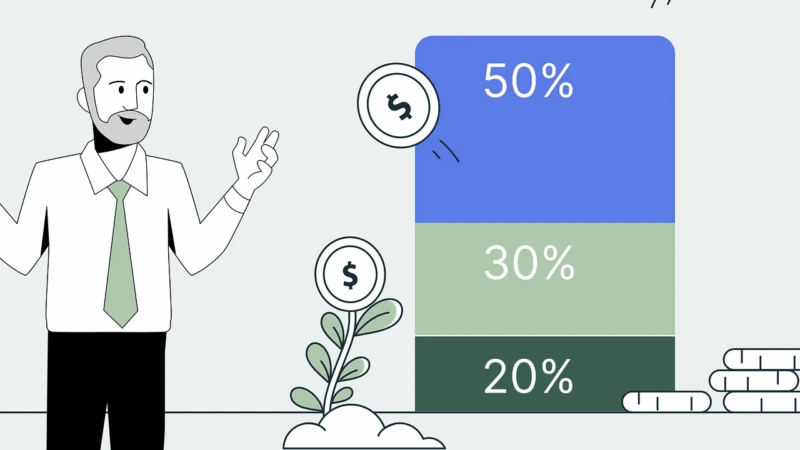
Jewelry, whether a sparkling diamond necklace or a simple gold bracelet, has a way of catching your eye. But behind these beautiful items, there’s a long story of how people have bought and sold them over time.
The jewelry business has changed significantly, from simple trades in ancient times to the advanced financial systems you have today. And while this article dives into that history, it’s good to remember that modern jewelers have tools to help them out.
If you’re in the jewelry business and want to check someone’s credit, go here to find reliable services for your needs.
Early Days of Jewelry Trade
In ancient societies, exchanging goods and services wasn’t as simple as handing over a few banknotes or swiping a credit card. It was the era of the barter system, where goods were directly exchanged for other goods without money. The jewelry trade, with its gleaming treasures, was no exception to this practice.
For those interested in exploring the intersection of finance and jewelry, consider browsing religious jewelry online for pieces that reflect personal beliefs and style.
Role of Barter System in Ancient Economies
The barter system was the backbone of ancient economies. It was a time when a merchant or customer would negotiate the value of what you had against what you desired. For jewelers and those in the jewelry trade, this often meant understanding the worth of their pieces, not just in terms of artistry but in relation to other essential items of the time.
Influence of External Variables
The simplicity of the barter system was interlaced with complexities. The worth of jewelry wasn’t fixed but fluctuated based on many factors. Natural events such as droughts could amplify the value of essential commodities like grains, altering the exchange rate for jewelry. Societal events, like religious ceremonies, weddings, or festivals, could spike demand for ornamental pieces, making them more precious in barter than during regular times.
Jewelry’s Barter Equivalents
It paints a vivid picture of jewelers in an ancient market, gauging their creations’ worth against prevailing conditions. A finely crafted necklace could be equivalent to a cow or several goats, given livestock’s value in agrarian societies. Bushels of wheat or barley might be bartered for a set of earrings, especially if food was in short supply. Beyond essentials, jewelry could also fetch luxurious textiles, aromatic spices, or even the services of skilled artisans. Each trade was a negotiation dance, aiming to strike a balance where both parties perceived they were getting fair value.
In the early days, people traded jewelry through the barter system, showing just how much they loved and valued beauty. Comparing how they valued these shiny pieces with everyday items gives us a glimpse into what ancient people considered important and beautiful.
Transitioning From Barter: The Advent of Credit Systems
As civilizations progressed and commerce grew more intricate, the limitations of the barter system became evident. In response, societies began experimenting with more sophisticated economic mechanisms. Enter the credit system—a groundbreaking evolution that would profoundly reshape the landscape of jewelry trading.
1. How Credit Systems Transformed Jewelry Trading
The advent of credit systems ushered in a transformative era for the jewelry industry. At its heart, this system was an embodiment of trust. Rather than an immediate exchange of goods for goods or goods for money, jewelers began to offer customers the option to acquire pieces with a commitment to future payment. This seemingly simple shift bore profound implications for the trade:
- Building Trust And Customer Loyalty: Offering pieces on credit was more than just a business tactic; it symbolized a jeweler’s faith in the customer’s pledge to settle their dues, fostering deeper customer loyalty.
- Enhancing Business Opportunities: This newfound flexibility expanded the potential market, allowing even those without immediate assets to entertain the idea of jewelry ownership.
- Encouraging Bigger Purchases: By alleviating the instant financial strain, customers were more inclined to eye higher-value pieces previously thought unattainable.
- Stabilizing Sales Amidst Economic Fluctuations: The ebb and flow of economic tides were mitigated. Even if buyers lacked on-the-spot resources, transactions could persist based on promises of later payments.
By intertwining trust with commerce, the credit system redefined the dynamics of the jewelry trade, enabling it to tap into broader opportunities and navigate challenges with greater agility.
2. Challenges Posed By Credit Systems
While the advent of credit systems brought transformative benefits to the jewelry trade, it wasn’t without complexities. Adopting a system based on future promises introduced new risks and necessitated nuanced financial management.

Here are some challenges that arose with this shift:
- Risk Of Customer Default: Trust was foundational in the credit system, but not all promises saw fruition. Some customers failed to meet their commitments, leaving jewelers with unpaid dues and potential losses.
- Implications For Cash Flow: Postponed payments affected jewelers’ liquidity. Without immediate revenue from sales, they had to plan their operations meticulously, ensuring adequate funds for immediate expenses, from procuring materials to paying artisans.
- Increased Record-Keeping: Managing credit sales required a more intricate record-keeping system—tracking who owed what and when payments were due added administrative burdens to jewelers.
- Potential For Overextension: Encouraged by the possibility of more sales, jewelers might extend credit too liberally, putting themselves at risk if a significant number of customers defaulted.
In embracing credit, the jewelry industry navigated a delicate balance. The benefits were substantial, but so were the challenges, demanding agility, foresight, and resilience from jewelers across the globe.
The Role of Banks and Formal Financial Systems
As societies and their economies grew in complexity, the realm of personal trust in the credit system began to show its limitations. A need emerged for a more structured, reliable, and scalable system to support the financial undertakings of businesses, including the jewelry trade. The banking system and formal financial institutions stepped in, serving as the bedrock of this new era, shifting trust from a personal to an institutionalized level.
- From Personal Trust To Institutionalized Trust: Unlike the intimate nature of personal credit systems, where jewelers and customers often knew each other, banks introduced a standardized measure of trust. Through rigorous credit assessments, banks could determine the creditworthiness of jewelers and customers, establishing a systemized approach to trust.
- Facilitating Capital For Growth: With banks in the picture, jewelers no longer rely solely on their sales for capital. They could approach banks for loans, allowing them to invest in more extensive inventories, procure rarer gemstones, or expand their store’s physical presence.
- Safety And Security: Banks provided a safe haven for jewelers to store their earnings. Beyond safeguarding funds, banks offered services like insurance, ensuring that jewelers could protect their valuable inventory from potential risks.
- Professional Financial Consultation: With formal financial systems, jewelers can access expert financial advice. Banks are crucial in guiding jewelers in their financial journey, whether about investments, expansion strategies, or risk management.
- Streamlining Transactions: Beyond just loans, banks introduced mechanisms like letters of credit, facilitating smoother international transactions. For jewelers importing gemstones or exporting finished pieces, these banking instruments reduced the risks associated with global trade.
In essence, banks and formal financial institutions were more than just lenders or safekeepers of wealth. They became pivotal partners for jewelers, enabling them to navigate the evolving economic landscape with greater confidence and ambition.
20th Century and the Rise of Consumer Credit
The 20th century heralded many innovations, not least of which was the emergence of consumer credit. As financial systems matured and became more intertwined with daily life, credit cards, and financing options began democratizing luxury, offering a new dimension of accessibility and flexibility. This wave of change had a pronounced impact on the jewelry industry.
- Immediate Gratification With Deferred Payments: Consumer credit allows individuals to acquire desired pieces immediately and pay for them over time. This shift meant that potential buyers no longer had to save for extended periods before owning a piece of luxury jewelry.
- Broadening The Customer Base: Credit systems, by making jewelry purchases more feasible for a larger segment of the population, effectively expanded the market. More people, even those from middle-income brackets, could now aspire to own luxury items previously out of their reach.
- Promotional Opportunities For Jewelers: The availability of credit gave jewelers a chance to introduce promotional offers, like interest-free periods or installment plans. These promotions could attract a larger clientele and incentivize bigger purchases.
- Adjusting To Economic Ups And Downs: Just as in the earlier era of personal credit, consumer credit allowed the jewelry industry to weather economic fluctuations better. During economic downturns, credit provided a means for consumers to continue purchasing, albeit with the safety net of paying in increments.
- Enhancing Brand Loyalty: With credit card reward programs and brand-specific financing offers, there were more avenues for jewelers to foster loyalty. Customers could reap benefits like points, cashback, or exclusive offers, further cementing their relationship with particular jewelers or brands.
The advent of consumer credit in the 20th century was more than just a financial evolution. It was a cultural shift, redefining the boundaries of luxury and accessibility. In this new landscape, jewelry, a symbol of opulence and tradition, found its way into the hands of a broader and more diverse clientele, enriching lives and stories across the spectrum.
Modern-Day Financial Innovations
The dawn of the 21st century brought an era of rapid digitalization, reshaping industries and redefining the fabric of commerce. With its age-old traditions, the jewelry business was not left untouched by this wave of innovation.

As boundaries dissolved and global connections strengthened, the financial landscape of the jewelry trade underwent transformative changes, embracing both challenges and opportunities.
- Digital Platforms And E-commerce: The digital era’s advent meant that jewelers could showcase their collections to a global audience through online platforms. Not only did this offer greater visibility, but it also opened up avenues for international transactions, partnerships, and collaborations.
- Crowdfunding: A Novel Venture In Jewelry Financing: Traditionally associated with tech startups and innovative projects, crowdfunding found its niche in the jewelry sector. Independent designers and jewelers began leveraging platforms like Kickstarter to fund unique jewelry lines or sustainable sourcing methods. Supporters worldwide could contribute, pre-ordering or investing in the idea and watch a concept come to life.
- Cryptocurrencies: The New Frontier in Finance: Cryptocurrencies like Bitcoin and Ethereum introduced a revolutionary approach to transactions and investments. Their decentralized nature and potential for high returns caught the attention of forward-thinking jewelers.
- Integration Of Cryptocurrencies In Jewelry Transactions: Some modern jewelers, staying ahead of the curve, started accepting cryptocurrencies as a form of payment. This catered to a niche market of crypto-enthusiasts and showcased the jeweler’s adaptability and innovation.
- Cryptocurrency As Collateral And Investment: Beyond mere transactions, cryptocurrencies began to play a significant role in financing. Jewelers started to see them as assets, using them as collateral for loans or holding onto them as investments, anticipating value appreciation.
The juxtaposition of traditional artistry with cutting-edge financial mechanisms paints a vivid picture of the current jewelry industry. As jewelers navigate this dynamic environment, they’re not just crafting beautiful pieces but also weaving the narrative of an industry in sync with the times, blending age-old allure with modern-day sophistication.
Towards A Conscious Future: Sustainable and Ethical Financing
As the world becomes increasingly interconnected and consumers more informed, there is a growing emphasis on the ethics and sustainability of industries. The jewelry business, often under scrutiny for its sourcing practices, is at a pivotal juncture, reflecting on its past while charting a course for a more responsible future.
This evolution is not just in creating and selling pieces but is deeply rooted in the financial mechanisms that support the industry.
- Addressing Ethical Concerns: The dark shadow of ‘blood diamonds’ and the exploitation of mining communities have long been concerns in the jewelry trade. Responding to global outcry and consumer demand, the industry is making strides towards more ethical practices. Financing plays a crucial role in this, as investments and loans are more readily available to businesses adhering to ethical standards.
- Supporting Conflict-Free Sourcing: Financial institutions and investors are becoming selective, prioritizing jewelers and businesses that source their materials responsibly. Specialized loans and grants have emerged, specifically designed to support conflict-free sourcing, ensuring that the gems and metals used do not fund warfare or exploit vulnerable communities.
- Empowering Artisan Communities: Beyond just sourcing, there’s a rising emphasis on those experts behind the jewelry. Ethical financing models now support artisan communities, ensuring they receive fair wages, skill development opportunities, and work in safe environments. By backing these artisans, the financial sector helps preserve ancient crafting techniques while ensuring a fair livelihood for the creators.
- Transparent And Responsible Financing: In a world craving transparency, financial institutions and investors are adopting open practices. They’re not just passively funding but actively assessing and ensuring that their investments promote responsible practices in the jewelry industry. This emphasis on transparency ensures that money flows into projects and ventures that align with global standards of ethics and sustainability.
The path towards a more sustainable and ethical future is not without its challenges, but it’s a journey the jewelry industry is committed to undertaking. Through conscious financing decisions and a focus on the greater good, each piece’s shimmer will soon reflect its aesthetic beauty and the ethical values it stands for.
Conclusion
The jewelry industry’s financial journey, from ancient barter systems to modern digital innovations, mirrors the evolution of global commerce. As you admire the sparkle of a gem or the intricacy of a design, you’re also witnessing a testament to centuries of economic adaptation and innovation. Understanding this financial tapestry enhances your appreciation, reminding you that behind every piece lies a rich story of trust, creativity, and resilience. In every shimmer, there’s artistry and a legacy of commerce and connection.










